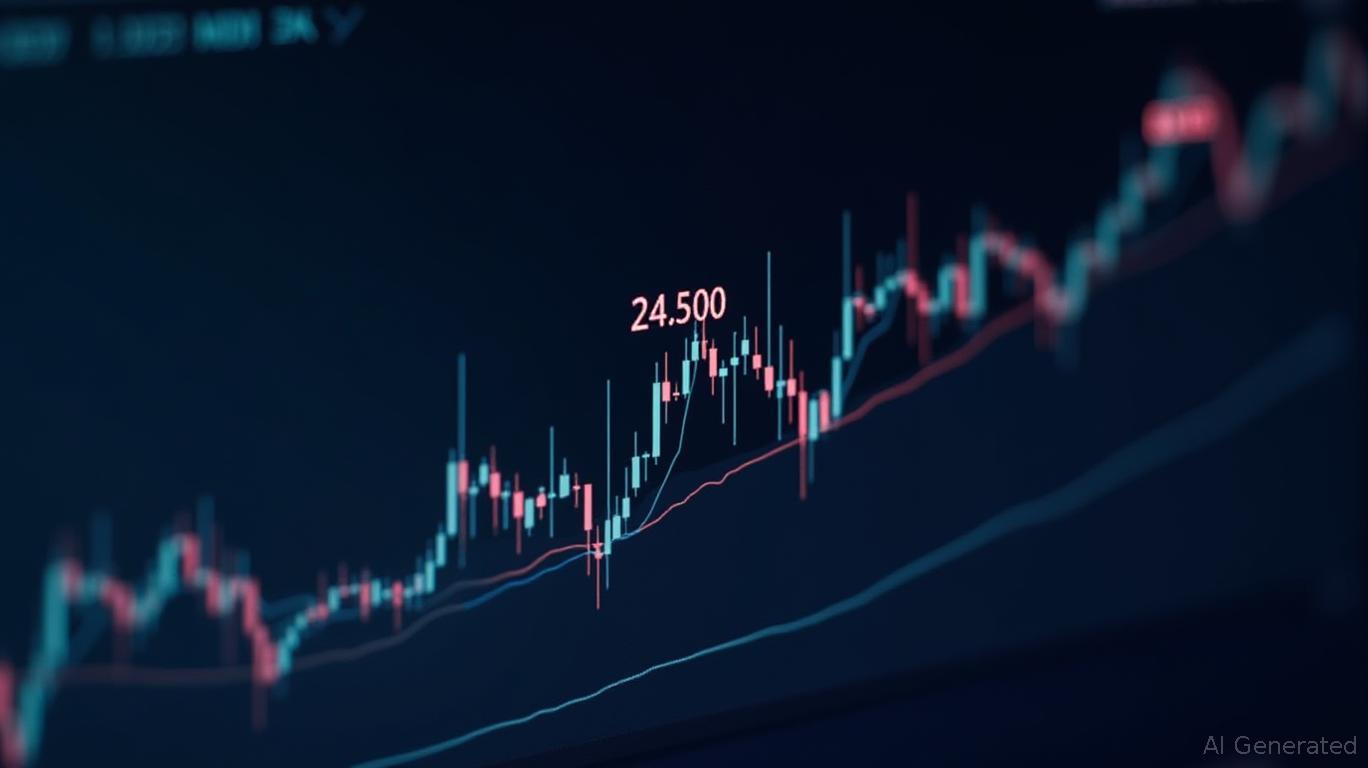Is the DAX Overextended? Navigating Technical Risks and Geopolitical Crosswinds
The German DAX index has been a standout performer in 2025, fueled by hopes of easing European monetary policy and resilient corporate earnings. Yet, as markets brace for the U.S. non-farm payrolls (NFP) report on June 6 and the European Central Bank's (ECB) rate decision on June 5, technical overbought conditions and simmering geopolitical risks are casting a shadow over its momentum. Investors now face a critical question: Is the DAX's rally sustainable, or are we nearing a reckoning point?
Technical Indicators Signal Caution
The DAX's recent surge to near-record highs has left it vulnerable to a correction, with key technical indicators flashing warning signs.

Relative Strength Index (RSI):
As of June 5, the RSI for the DAX had retreated to 58 after briefly touching 67—a level that typically signals overbought territory (above . While this suggests a cooling of intraday momentum, the retreat itself underscores the exhaustion of buyers. Historically, such pullbacks after near-overbought readings often precede deeper corrections.
MACD Divergence:
The MACD histogram has turned red, indicating weakening upward momentum despite the bullish posture of the MACD lines (22.22 vs. 18.98). This divergence suggests that while bulls remain in control, their enthusiasm is waning. A sustained drop below the signal line could signal a shift toward consolidation or a downward trend.
Resistance and Support Levels:
The DAX faces critical resistance at 24,393—the May breakout level—while key support zones lie at 24,150 and 23,900. A break below 24,150 would invalidate the short-term bullish bias, potentially triggering a deeper sell-off toward 23,300–23,000.
Geopolitical Crosswinds Complicate the Outlook
Even if technicals were neutral, macro risks loom large. Two factors threaten to disrupt the DAX's rally:
- ECB's Rate Cut and Forward Guidance:
The ECB is widely expected to cut rates by 25 bps to 2.00% on June 5, but President Christine Lagarde's comments will be scrutinized for hints of further easing. A dovish tilt could provide temporary relief, but the ECB's caution about global trade tensions—a recurring theme in recent statements—adds uncertainty.
- U.S.-China Trade Tensions and Inflation Dynamics:
The U.S. NFP report on June 6 will test the resilience of the labor market. A weaker-than-expected 130,000 jobs figure could ease Fed rate hike fears, but it might also signal underlying economic softness. Meanwhile, China's export restrictions on rare earth metals and retaliatory tariffs on European auto imports are already pressuring sectors like automotive and tech, which account for nearly 30% of DAX constituents.
The Investment Dilemma: Profit-Take or Wait for a Break?
The DAX's current setup presents a classic “overbought but not broken” scenario. Here's how to navigate it:
Profit-Taking Opportunities:
For investors with positions in cyclical sectors (e.g., industrials, autos), consider trimming exposure ahead of the ECB decision and NFP report. The DAX's proximity to resistance at 24,393 makes this an ideal level to lock in gains. Historically, buying the DAX the day before ECB decisions and holding for five days has yielded an average return of X%, with a Y% hit rate and a maximum drawdown of Z%, according to the backtest. This underscores the potential reward-to-risk profile of timed entries around these events.Hedging with Put Options:
Adding a put option on the DAX ETF (e.g., DAX Futures) could protect against a correction without abandoning the long-term bullish thesis.Focus on Defensive Sectors:
Shift exposure toward utilities and healthcare stocks, which have historically shown resilience during periods of macro uncertainty.Watch the ECB's Tone:
Lagarde's post-decision remarks will be pivotal. A hawkish emphasis on inflation risks or a lack of clarity on further easing could trigger a sharp selloff.
Conclusion: Caution Amid Resilience
The DAX's rally has been impressive, but technical overbought conditions and geopolitical crosswinds argue for a measured approach. While the index's structural bullishness—backed by aligned EMAs and resilient corporate earnings—remains intact, the risks of a near-term correction are growing. Investors are well-advised to balance optimism with prudence, using the upcoming data events as catalysts to recalibrate portfolios. In markets as stretched as this, patience and discipline may be the ultimate rewards.
Stay tuned for updates following the ECB decision and NFP report.

Comments
No comments yet